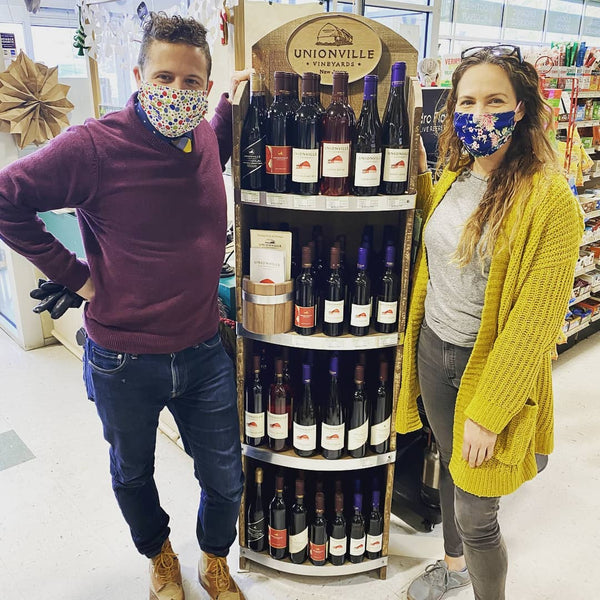Meet the Chefs: Todd Villani of Terre a Terre
In this second installment of our Meet the Chefs series, Unionville's Phil Moran interviews chef Todd Villani of Terre a Terre in Carlstadt, NJ. Over the last year, this mid-sized (50 seat) restaurant and Unionville Vineyards partner, has earned more important rave reviews than any other Garden State restaurant.
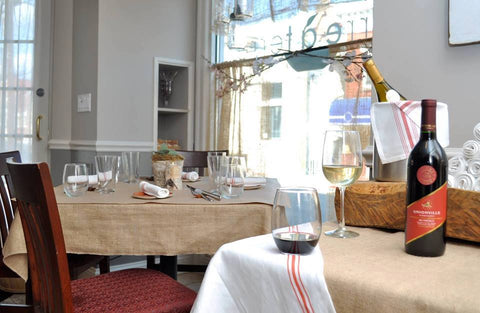
For the New York Times, Fran Schumer noted:
In a tiny kitchen in Carlstadt, a town in southern Bergen County better known for its proximity to the Meadowlands than for farm-to-table restaurants, Todd Villani prepares some of the best locally sourced New American dishes in New Jersey. Lacking major investors, Mr. Villani found the largest space he could afford, and with the help of friends and local artists — even the décor is locally sourced — transformed a forlorn spot on a commercial street into Terre à Terre, which opened in October….
Now, its two candlelit dining rooms truly do convey the warmth of a French country kitchen.
You’re here, however, not for the décor or even for the fine recorded jazz playing softly in the background, but because on almost every plate is something wonderful.
* * * *
Before opening Terre à Terre, Mr. Villani worked under Marcus Samuelsson at Aquavit in Manhattan for three years and in kitchens in New Jersey and abroad. Now, in the first establishment that is his own, he has accomplished the almost impossible: opening a viable farm-to-table restaurant, off the beaten path, and issuing a stream of first-rate dishes from its small and crowded kitchen.
Read the entire article here.
The Star Ledger's focus was similar:
Villani follows his farm-to-table philosophy religiously; ingredients must be local, and he puts a 300-mile limit on that. It was his grandmother who first pulled him into the garden, gathering dandelions at age 5. And who doesn't love a fresh garden ingredient, especially during the fall harvest, when Brussels sprouts and sweet potatoes abound? But Villani’s restaurant, despite its country French décor and its tables covered in burlap and butcher paper, is not about rustic. The food is grand and sophisticated, an entirely unexpected opulence in a blue-collar, chicken Marsala town.
It’s an opulence gained in part from Villani’s years with Marcus Samuelsson, of “Top Chef” and “Chopped,” a chef revered in the industry for his unique global approach to cuisine and a particular love of spices.
Thus the opulence of the crab cakes ($15), a dish that is gorgeous and delicate, sweeping across the plate as if it were a ballet production, about to leap, gracefully. The dish comes with dried cranberries and pistachios, and a whimsical circle of radish. Each element is part of the movement of the dish, as carefully placed as jewels. Villani begins with a strong ratio of fresh lump crab, not even an egg to bind it, but a bit of chipotle aioli to add spark. The crab cakes, moist and perfectly crisped, are finished with a remoulade of charred leeks and capers, sort of a city cousin to tartar sauce. So it’s food you know, but entirely dressed up for the party.
Polenta ($13) surprises more. You expect comfort; you receive duck confit, seductive and fatty rich, with the skin also crisped just so. And, on top, a fried egg, the yolk swirling as butter for even more richness. You’d forget the roasted garlic polenta entirely except that it’s damn good too, sturdy and shaped like a football. (It’s called a quenelle, and the shape is a time-consuming fine-dining trick; they don’t do quenelles at most farm-to-table restaurants. This fact is more impressive when you learn that it’s a two-man kitchen, six burners and a fryer in 75 square feet, and that Villani insists on plating each dish himself. )
Short ribs ($28) are a signature; the fall version, well-marbled and tender, is glazed in maple and bourbon, with an inventive, and comfortingly addictive, butternut squash and goat cheese gratin. A harvest meal, better than Thanksgiving. Scallops with prosciutto ($28) is another pretty party dish, enlivened by the orange of a swirl of burnt butter sweet potato. The scallops alone are remarkable, dry and sweet, and the prosciutto superior.
Find the entire article here.
New Jersey Monthly’s Review is equally praising:
These days, every chef’s mantra is fresh, local, seasonal. Todd Villani learned what it meant when he was about four and growing up in Rutherford. “My grandmother Carmela,” he told me in a phone interview after my visits, “rounded me up to go looking for dandelion leaves and shoots. Everyone else considered dandelions weeds. But she was from Naples. To her, dandelions were delicate greens for tonight’s salad or tomorrow’s soup. That’s when I understood that food is something that grows, that is fresh and good for you. It doesn’t have to come in a package.”
It’s true that Villani obtains almost half his ingredients from the Garden State and virtually all but North Atlantic fish and lobster from within a range of 300 miles. But what makes Terre a Terre special is less its farm-to-table ethos than the all-important stop the ingredients make en route—in the kitchen.
Take, for example, his marvelous lamb spring rolls. The lamb comes from Elysian Farms in Pennsylvania. The sauce is a tangy reduction of sweetened soy, lemongrass, ginger and sesame oil. The magic is not in where the ingredients come from but in what the chef does with them. The spring roll is not fried; it’s served moist and cool. Villani forms a supple cylinder from braised pulled lamb, crushed peanuts and minced basil, scallion, bell pepper and carrot. These are wrapped in Swiss chard, then in velvety spring roll wrappers translucent from a short soak in cool water. Sprinkle with more crushed peanuts, and the result is an appetizer I am glad I don’t have to travel 300 miles for—though given everything else Villani and his sous chef, Brian McGackin, produce in their tiny kitchen, it just might be worth the trek.
Equally notable are his crispy whole artichoke hearts, complete with edible stems and papery petals. The hearts are stuffed with a ruddy mix of ground chorizo from Nicolosi Fine Foods in Union City and chèvre from Flint Hill Farm in Pennsylvania. Every bite combines crunchy and creamy, meat and dairy flavors. Villani has been serving it in different places since 2007. “I want to get away from it,” he said, “but I can’t. People love it.”
Villani, 41, lives in Carlstadt. The town, which looks both urban and suburban, has never been a dining destination. But Terre à Terre (French for “down to earth”) should give people looking for exciting food reason enough to go.
Fortunately for him, he landed a job with Marcus Samuelsson. . . . .
From the renowned Ethiopian-Swedish chef, Villani said he learned “refined technique applied to comfort food.” A toothsome example is Terre à Terre’s sumac-seasoned crispy chicken (from Goffle Road Farm in Wyckoff). The dish combines a lush confited leg and thigh with a crisply sautéed breast and seasonal accompaniments—recently, spiced couscous, haricots verts and tarragon jus.
Under Samuelsson, Villani said, “I worked my way up from cook to executive sous chef. I soaked it up like a sponge. He’s demanding but fair, and it was a great experience.”
Read the entire review here.
After reading these and other reviews, I had the opportunity to sit with Chef and both revisit his background and attempt to grasp how that background plays out in his kitchen.
Q: Chef, what in your background led to this emphasis and commitment to “local”?
A: I've worked in almost every position in a kitchen and restaurant, from bussing tables and washing dishes, to years as a waiter and managing the front of the House, and all of those experiences inform who I am and what I want. To me the key is comfort. I believe my responsibility is to leave every guest secure in my use of the very freshest, least processed ingredients. Comfort continues in the staff and their manner. I try to embody the concept of comfort, in the décor, the plating and most of all in the preparation of each dish. In the end, every guest should leave believing they have received our best efforts, great, and interesting food, caring and kind service, and great value. That’s what makes first time guests into regulars.
Q: When I think of “Comfort Food” I think of the traditional, the foods my Mother made. But when I look at your menu I see ingredients I’m sure my Mom never heard of and presentations unlike anything ever made in our kitchen. I mean you’ve got a Burger on your lunch menu, but it includes Duck Fat Bernaise, white truffles and sautéed chives. How is this comfort food in the traditional sense?
A: Comfort never excludes imagination and invention. We have to measure comfort by the results. I want my guests to be excited. I want my staff to be challenged. I want to challenge myself. But at the end of the meal, we all, staff and guest, need to be comfortable, satisfied and warm with the overall experience. If we end the workday with that shared result, we all leave comfortable.
Q: You frequently mention all that you learned from Marcus Samuelsson, how does Terre a Terre reflect that experience?
A: More than anything Marcus preaches and demonstrates the over-riding importance of the very best and very freshest ingredients. That is always the only place to begin, but it’s not the ending. Chef Samuelsson insists on perfect preparation. Perfection like that requires effort, diligence and refined technique. It’s a philosophy. Kaizen* is our mantra. The result must be consistent achievement of the highest order. In New York, we regularly produced 500 covers in a single evening. Consistency over 500 covers was mind boggling when I first started, but became second nature, had to become second nature, to satisfy Chef’s standards. We might do 60 covers at Terre a Terre, but I require the same level of attention and respect for the customer and the craft.
* Kaizen: a Japanese business philosophy of continuous improvement of working practices, personal efficiency, etc
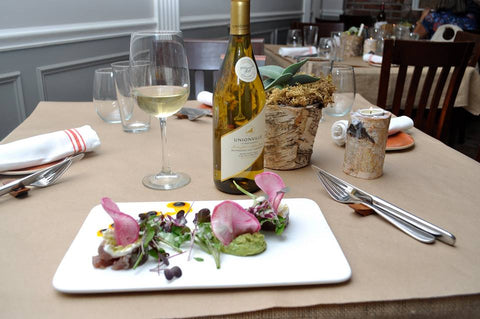 Q: How does Terre a Terre and the dining experience here, differ from Chef Samuelsson’s model?
Q: How does Terre a Terre and the dining experience here, differ from Chef Samuelsson’s model?
A: Here, I personally plate every dish. That’s not possible over 500 covers. Nothing leaves the kitchen that I haven’t seen, approved, touched and finished. I spend far more time and effort on presentation than can a Chef in a larger kitchen. I have a truly excellent Sous Chef and team. But with 60 covers, everything can be expected to meet my standards. Beyond the food itself, I have the opportunity every night to go into the dining room and greet and interact with my guests. Having been a waiter both before and after Culinary School, I love that opportunity to meet and often learn from my customers. The feedback I receive has often led to a modification in a dish or recipe. That’s priceless to me.
Q: What does the future hold for Terre a Terre and for you?
A: We are not even two years old. We are not yet busy every night. I am confident of our direction, in fact, I am in the process of extending my lease. Carlstadt is my home. The only change I am currently planning is for both Terre a Terre and myself to grow better, busier and more satisfied in this business.

Leave a comment
Comments will be approved before showing up.
Also in Unionville Grapevine
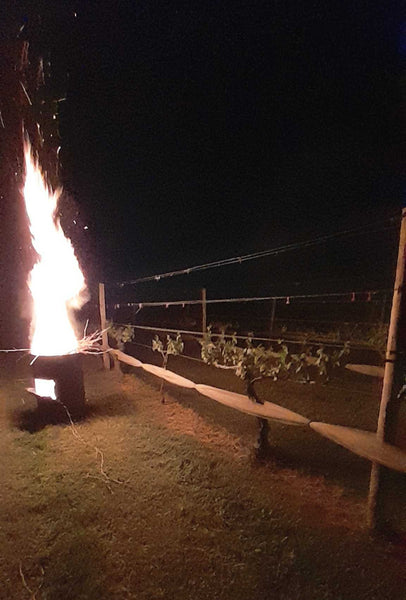
Too Frigid For May: How Unionville Reacted to Destructive Frost
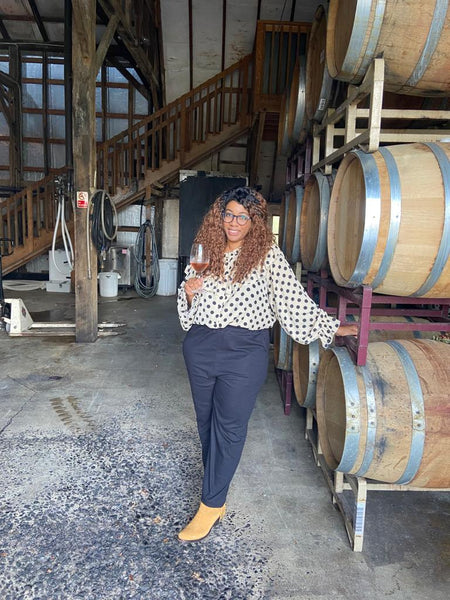
Meet Ahjiné Garmony, Unionville's New Wine Club Manager
Desk or vineyard? This is the question I asked myself when making the leap of faith to leave my corporate life behind to pursue my passion for wine. After working in the medical communications space for 10 years, 2022 was the year of epiphany. It may sound old fashion, but I did have a major realization in the beginning of the new year that I was not meant to work behind a desk and chug along doing work that I was no longer passionate about.
My first notion of my interest of wine came during my frequent business trips to Boston about 4 years ago. For the first time I was immersing myself in the world of wine through client dinners, networking events and a lot of self-exploring through Beantown. During this time was my first encounter with sommeliers and wine experts. I was fascinated and intrigued by the expertise knowledge of wine, wine making and learning about the intricacies that goes into producing a bottle of wine. At this moment, I thought about how amazing it was to witness such passion for the craft of wine.
I enrolled in an online sommelier level one course at the Wine School of Philadelphia and began studying and reading everything I could about wine. This is where my 2nd major epiphany happened – I asked myself, the question that I stated in the beginning “desk or vineyard?”
This is the question that started the major stepping stone to my journey. I no longer wanted my wine passion to be in the background – I wanted to be 100% committed and both feet in. Unionville Vineyards was the first winery that popped into my head when I thought about making my “9:00- 5:00” switch. I attended a wedding at Unionville the year prior and loved the atmosphere, the wine and the people. The position that I applied to was half farm work half hospitality. I was instantly attracted to the idea of being out in the field to where it all begins in wine making. Thoughts of my “office” transforming into the beautiful vineyard was something I desired. I was pleasantly surprised to learn that Unionville has multiple vineyard sites with the Coventry site located within Coventry Farm in Princeton being my favorite (love the views there!) Working at the different sites allows you to see how the different micro climates, soil and land impact the vines and fruit cluster growth. Also working in the field to me was the perfect learning opportunity to understand the craft of wine making soup to nuts. Being surrounded by vines that produced grapes such as Pinot Noir, Cabernet Sauvignon, Syrah, Chardonnay was eye opening to me. I was so used to seeing the finished product of these grape varietals in their bottled form, but actually being able to perform farming techniques on the vines starts to create another level of perspective and appreciation for wine.
One of my favorite farming tasks to perform in the field on the vines is leaf pulling. Leaf pulling is when you remove leaves from around the fruit clusters. The rule of thumb is to remove leaves that are across and below from the fruit cluster. Removing the leaves creates oxygen flow, openness for pesticides to be sprayed and exposes the fruit to more sunlight. I enjoy seeing the satisfying result of a perfectly balanced vine with the right number of leaves removed. Working in the field creates a huge bond between you and your other field peers. You become a family unit and learn how to work together and communicate as a team. To me, this is a very important factor for having a successful vineyard. My experience with people at Unionville in general has been amazing. You have the opportunity to interact with people from all different backgrounds (teachers, college, corporate, etc.) which makes for some great conversations and comradery.
To anyone reading this, do not be afraid to follow your passion and take a chance on doing what you want to ensure your happiness. It was scary to make such a drastic shift from corporate to farm work, especially since the two are extremely opposite ends of the spectrum, but I have no regrets and I am happy with where my career and focus is going.

